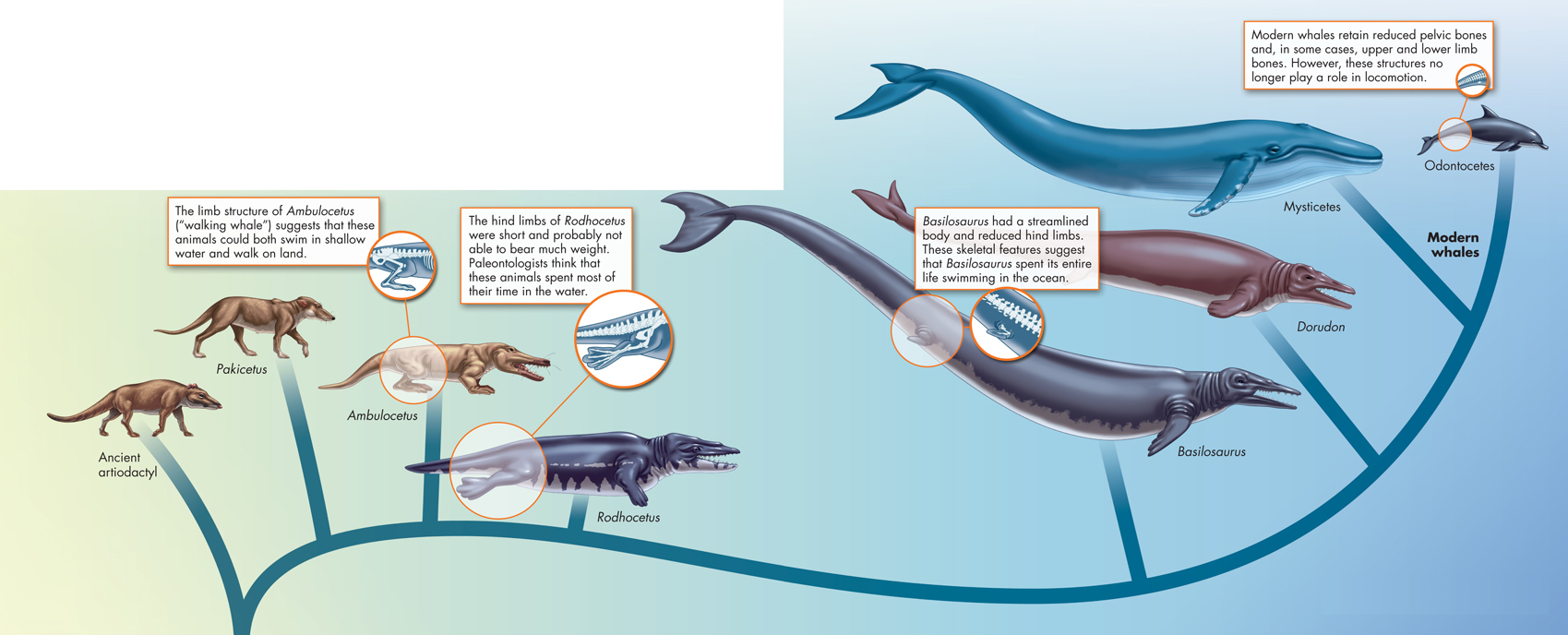The Age of Earth and Fossils
 How do fossils help to document the descent of modern species from ancient ancestors?
How do fossils help to document the descent of modern species from ancient ancestors?
Two potential difficulties for Darwin's theory involved the age of Earth and gaps in the fossil record. Data collected since Darwin's time have answered those concerns and have provided dramatic support for an evolutionary view of life.
The Age of Earth Evolution takes a long time. If life has evolved, then Earth must be very old. Hutton and Lyell argued that Earth was indeed very old, but technology in their day couldn't determine just how old. Half a century after Darwin published his theory, however, physicists discovered radioactivity. Geologists now use radioactivity to establish the age of certain rocks and fossils. This kind of data could have shown that Earth is young. If that had happened, Darwin's ideas would have been refuted and abandoned. Instead, radioactive dating indicates that Earth is about 4.5 billion years old—plenty of time for evolution by natural selection to take place.
VISUAL SUMMARY
EVIDENCE FROM FOSSILS

FIGURE 16–13 Recently, researchers have found more than 20 related fossils that document the evolution of modern whales from ancestors that walked on land. Several reconstructions based on fossil evidence are shown below in addition to the modern mysticete and odontocete. Infer Which of the animals shown was probably the most recent to live primarily on land?
Table of Contents
- Formulas and Equations
- Applying Formulas and Equations
- Mean, Median, and Mode
- Estimation
- Using Measurements in Calculations
- Effects of Measurement Errors
- Accuracy
- Precision
- Comparing Accuracy and Precision
- Significant Figures
- Calculating With Significant Figures
- Scientific Notation
- Calculating With Scientific Notation
- Dimensional Analysis
- Applying Dimensional Analysis




